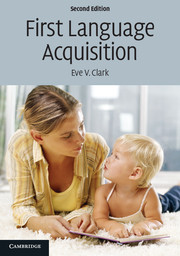Book contents
- Frontmatter
- Contents
- List of tables, boxes, and figures
- Acknowledgements
- 1 Acquiring language: Issues and questions
- Part I Getting started
- 2 In conversation with children
- 3 Starting on language: Perception
- 4 Early words
- 5 Sounds in words: Production
- 6 Words and meanings
- Part II Constructions and meanings
- Part III Using language
- Part IV Process in acquisition
- Glossary
- References
- Name index
- Subject index
3 - Starting on language: Perception
from Part I - Getting started
- Frontmatter
- Contents
- List of tables, boxes, and figures
- Acknowledgements
- 1 Acquiring language: Issues and questions
- Part I Getting started
- 2 In conversation with children
- 3 Starting on language: Perception
- 4 Early words
- 5 Sounds in words: Production
- 6 Words and meanings
- Part II Constructions and meanings
- Part III Using language
- Part IV Process in acquisition
- Glossary
- References
- Name index
- Subject index
Summary
To what extent are human infants predisposed to attend to speech sounds? This question has been addressed from a number of positions over the last twenty years, with the answers becoming more complex as researchers learn more about how infants (and adults) analyze the speech stream, categorize speech sounds, and process running speech. This chapter looks at what infants start from as they begin to attend to the language around them and how they come to identify units within the stream of sound. What abilities do infants have at birth? Can they detect similarity and difference in successive speech sounds? When are they able to recognize previously heard units? Until children can recognize chunks of speech (words or phrases, for instance) as recurring from previous contexts, they cannot begin to attach meanings to them. The emphasis in this chapter is on how children first get in to language through analysis of the speech stream.
In many cultures, adult speakers consistently differentiate how they speak according to the age of their addressees – infants, young children, older children, adults (see Chapter 2). Exaggerated affect in the voice, a higher pitch range, and steeper rises and falls in intonation mark off some speech as directed to infants, who appear to be particularly attentive to such modulations. Indeed, some researchers have suggested that such speech allows infants to attach affective meaning to vocalizations early in their exposure to language (Bloom 1997; Fernald 1992).
- Type
- Chapter
- Information
- First Language Acquisition , pp. 51 - 74Publisher: Cambridge University PressPrint publication year: 2009



